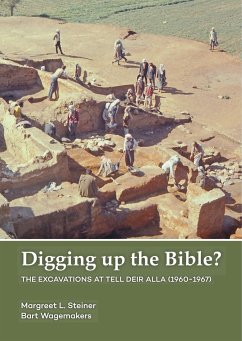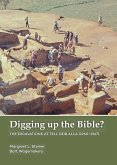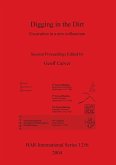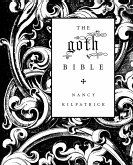This is the account of a remarkable excavation. It started with a modest dig on an unremarkable tell in Jordan. The name of the tell does not occur in the Bible, and no ancient town of any importance was to be expected under the rubble. The excavator Henk Franken had not yet made a name for himself within the archaeological community. And yet, from 1960 onwards history was being (re)written at Tell Deir Alla. To discover the secrets of the tell, the expedition team defied cold, rain and stormy winds for months on end, sleeping in rattling tents and working long days on the tell and in the camp. And with success! A meticulous yet efficient excavation method was introduced, the already tenuous relationship between Bible and archaeology was further exacerbated, and the study of excavated pottery was given a scientific basis. The name Deir Alla became an international benchmark for modern scientific research, for prompt publication of the remarkable finds and for independent interpretation of the excavation results. The story of the excavations at Tell Deir Alla in the 1960s have never been told in any detail, and the excavation results have mostly been published in scholarly books and journals which are difficult to access. This book hopes to remedy that. It recounts the story of the first ten years of the project, from 1959 when funding for the project was sought, until 1969 when the first report was published. The first section describes the organization of the project before the expedition team went out into the field. The second part takes the reader to the actual field work and describes the occupation history of the tell. The story is illustrated by numerous photographs and plans, many of which are being published for the first time. ContentsPrologueChapter 1. Excavating in JordanThe Hashemite Kingdom of JordanThe East Jordan ValleyTell Deir AllaThe tent campChapter 2. From theologian to archaeologistFrom theologian to archaeologistTell es-Sultan: a source of archaeological inspirationFrom Tell es-Sultan to Tell Deir AllaSailing his own course...Chapter 3. This is how you organise a dig!Start of the organisation in the homelandThe organisation in JordanChapter 4. The pickaxe hits the soil1960 - Start of the expedition1961 - A difficult but successful excavation season1962 - An intermediate season1964 - Excavation of the temple1967 - A new startChapter 5. The story of the inhabitantsFarmers in the Chalcolithic periodTrade in the Middle Bronze AgeLife around the Late Bronze Age templeBronze smiths in the Early Iron AgeA village on the crossroadsMourning on the tellEpilogue








